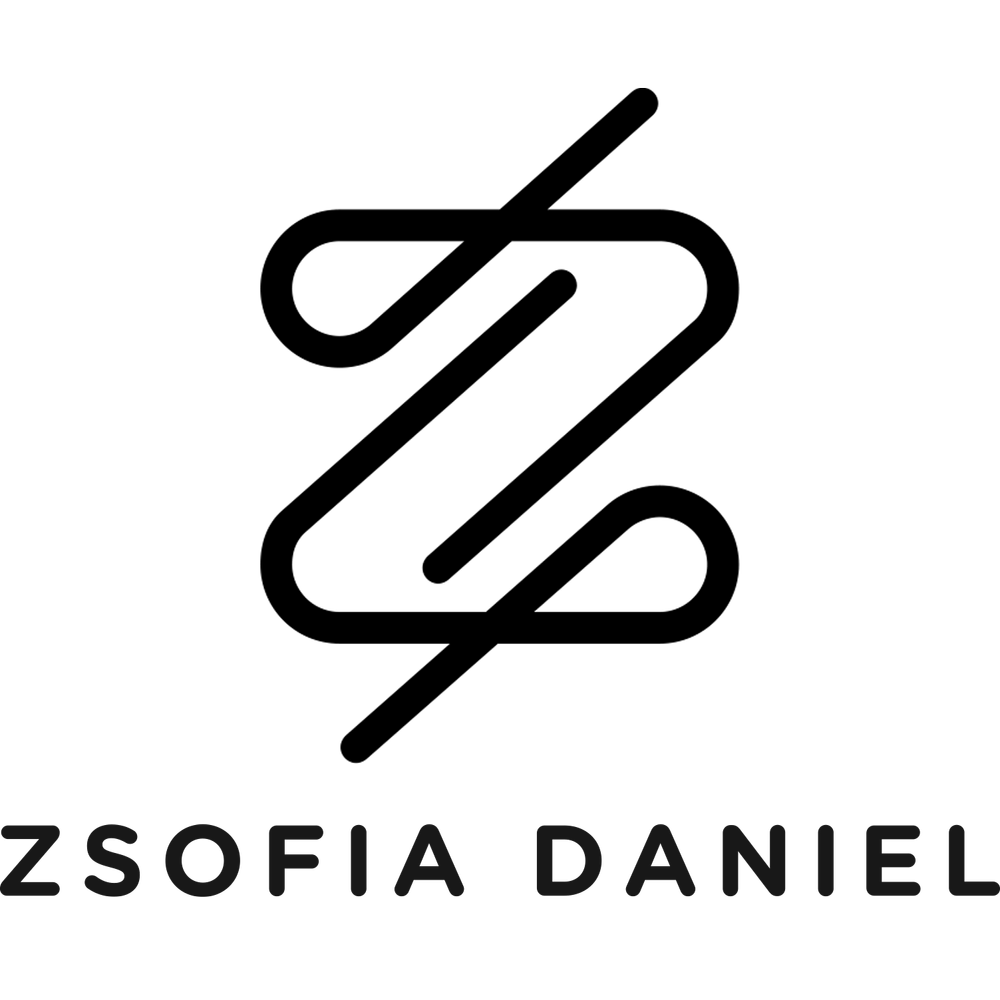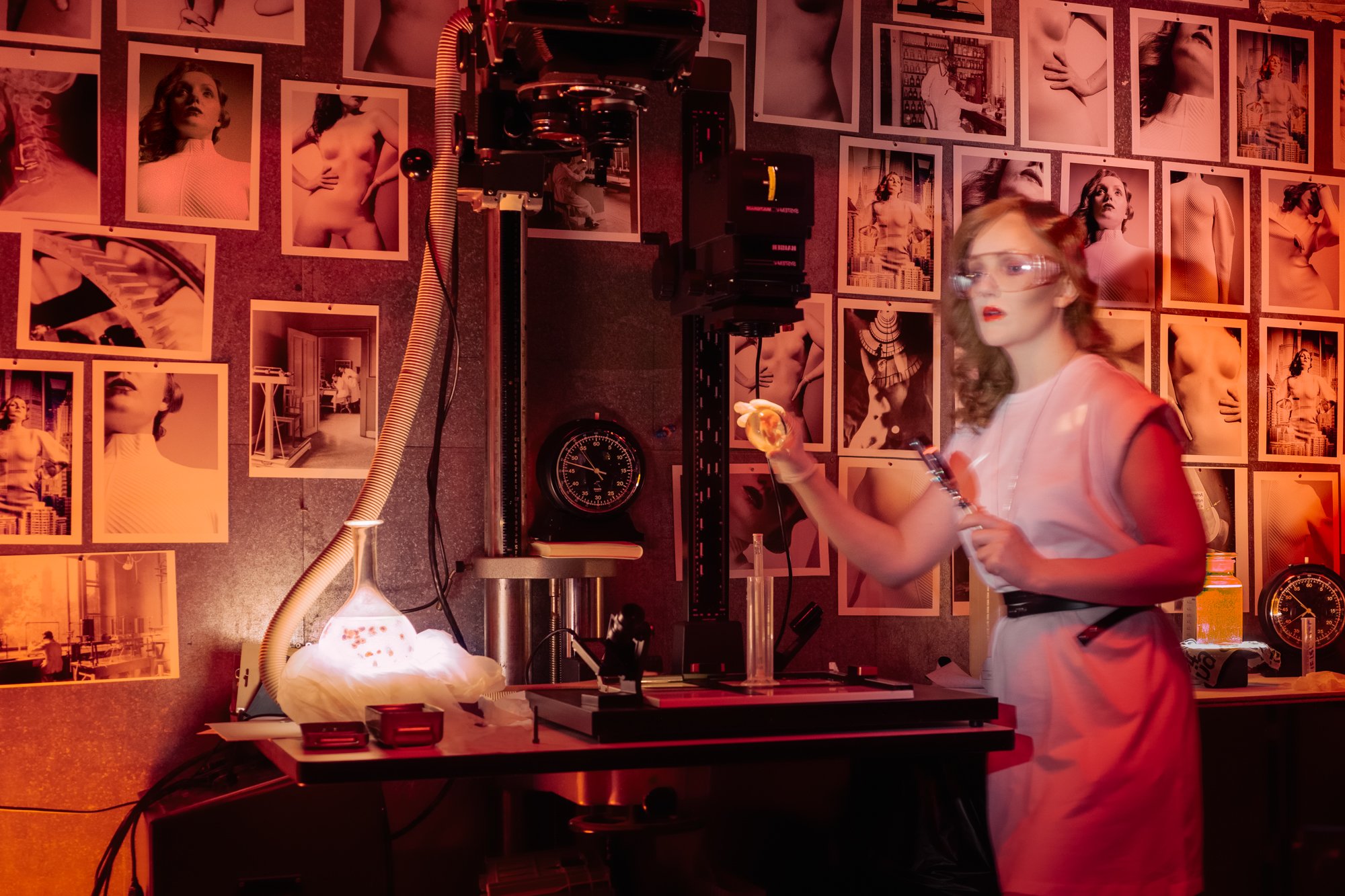Behind the image: “Brave new world?”
Project Summary
The images in ‘31 explore social and political parallels between the present and the late 1920s and 1930s.
The project’s limited-edition archival pigment prints measure 28 x 42 cm (11 x 16.5 inches).
Caption to “brave new world?”
“Brave New World?” depicts a scene from Aldous Huxley’s eponymous 1932 novel, about a hierarchical, consumerist society that is as superficial as it is peaceful. Its global government’s aims are achieved with bio-engineering, psychological conditioning, and behaviour-controlling drugs. In this dystopian satire, human eggs are fertilised ex-utero then bio-engineered for caste-dependent social roles, resulting in children conditioned to accept norms that further society’s security.
Given revolutionary advances in science, medicine, and information technology, Brave New World seems prescient. Powerful tools now exist for genetic engineering and psychological control; the idea that the health, cognition, and longevity of humans can be “optimised” is already being turned into reality by private companies. Some of these advances may improve life, but they have their dark sides. What are our ethical boundaries regarding such advances? What will freedom mean in a world designed for a purpose?
Brave New World?- 2021
Copyright: Zsofia Daniel; In frame: Ivory Flame Model; Make-up: Adrienn Bodor; Hair: Beyza Tut
The Title
The title of the image is a play on Aldous Huxley's famous "Brave New World". The novel provides an intricate interplay of the writers personal experiences, intellectual curiosity, and the sociopolitical milieu of his time. Written in the late 1920s, the novel emerged as a unique response to the tumultuous shifts in society and science that defined the era.
Huxley's fascination with science, technology, and their potential implications significantly influenced the genesis of "Brave New World." The rapid advancements in industrialization, genetics, and psychology that marked the early 20th century served as both an inspiration and a source of apprehension for him. In particular, his engagement with the works of scientists, industrialists and thinkers like Pavlov, Freud, and Ford helped shape the narrative's themes of conditioning, psychological manipulation, and technological control.
The global landscape of the time also played a pivotal role in Huxley's creative process. The aftermath of World War I had left a scarred world seeking stability, and the rise of totalitarian regimes in Europe raised alarms about the power of centralized authority. Huxley's observations of these developments, coupled with his reflections on the consequences of mass production and consumerism, found their way into the core fabric of "Brave New World."
Personal experiences also influenced Huxley's novel. A journey to the United States in the early 1920s exposed him to the emerging consumer culture, mass media, and the influence of psychology on advertising and propaganda. These experiences offered a glimpse into a future where individuality and autonomy might be threatened by conformity and mass manipulation. His personal struggles, including his loss of sight due to illness, contributed to his contemplation of the human condition, identity, and the ethical ramifications of scientific progress.
Huxley's intention with "Brave New World" was not merely to predict the future, but to craft a cautionary tale that explored the implications of unchecked technological and social advancements. He aimed to engage readers in a thought-provoking dialogue about the potential cost of sacrificing individuality, ethics, and human connections for the sake of stability and comfort.
Brave New World - ALDOUS HUXLEY - First American Edition 1932 (New York: Doubleday, Doran & Company, Inc., 1932)
Detail of “Brave New World?” from the fine art photography project ‘31
The Background
In the background of the image, a rich tapestry of influences converges to frame the scene. Here, modern advertising's polished aesthetics meet the dreamlike essence of 1920s surrealist photography, blended seamlessly with the raw realism of 1930s hospital documentary captures. Adding an enigmatic layer, x-ray imagery infuses the tableau with a sense of revelation and hidden layers.
The meticulously chosen images of the model play a pivotal role. Captured separately yet strategically positioned, they create a striking repetition—both as the lab assistant and the mirrored figure on the wall. This mirroring effect not only emphasizes themes of genetic identity and bio-engineering central to Aldous Huxley's vision but also pays homage to the dystopian film "Metropolis" from 1927. This cinematic reference imbues the tableau with a nostalgic yet futuristic allure, echoing the film's exploration of societal manipulation and hierarchy.
The tableau harmonizes these diverse influences into a narrative-rich backdrop, serving as a canvas for contemplation. Modern aesthetics, historical echoes, and surreal undertones merge, inviting viewers to delve into the complex interplay of genetic manipulation, societal control, and the enigmatic journey toward an uncertain "brave new world."
The Explanations
Except the Caption, the majority of the texts on this page are written with the help of ChatGPT4.

